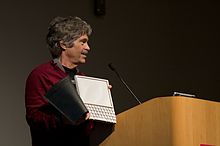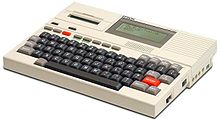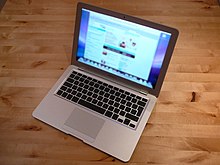Introduce :
A smartphone, or smart phone, is a mobile phone built on a mobile operating system, with more advanced computing capability and connectivity than a feature phone.The first smartphones combined the functions of a personal digital assistant (PDA) with a mobile phone. Later models added the functionality of portable media players, low-end compact digital cameras, pocket video cameras, and GPS navigation units to form one multi-use device. Many modern smartphones also include high-resolution touchscreens and web browsers that display standard web pages as well as mobile-optimized sites. High-speed data access is provided by Wi-Fi and mobile broadband. In recent years, the rapid development of mobile app markets and of mobile commerce have been drivers of smartphone adoption.
The mobile operating systems (OS) used by modern smartphones include Google's Android, Apple's iOS, Nokia's Symbian, RIM's BlackBerry OS, Samsung's Bada, Microsoft's Windows Phone, Hewlett-Packard's webOS, and embedded Linux distributions such as Maemo and MeeGo. Such operating systems can be installed on many different phone models, and typically each device can receive multiple OS software updates over its lifetime. A few other upcoming operating systems are Mozilla's Firefox OS, Canonical Ltd.'s Ubuntu Phone, and Tizen.
Worldwide sales of smartphones overtook those of feature phones in early 2013.
History :
Origin of the term
Devices that combined telephony and computing were conceptualized as early as 1973, and were offered for sale beginning in 1994. The term "smartphone," however, did not appear until 1997, when Ericsson described its GS 88 "Penelope" concept as a Smart Phone.
 |
| IBM Simon and charging base |
The distinction between smartphones and feature phones can be vague, and there is no official definition for what constitutes the difference between them. One of the most significant differences is that the advanced application programming interfaces (APIs) on smartphones for running third-party applications can allow those applications to have better integration with the phone's OS and hardware than is typical with feature phones. In comparison, feature phones more commonly run on proprietary firmware, with third-party software support through platforms such as Java ME or BREW. An additional complication is that the capabilities found in newer feature phones exceed those of older phones that had once been promoted as smartphones.
Some manufacturers and providers use the term "superphone" for their high end phones with unusually large screens and other expensive features.
With the advent of devices with larger screens, the term "phablet", a portmanteau of the words phone and tablet, had come into common usage by 2008.
Early years
The first cellular phone to incorporate PDA features was an IBM prototype developed in 1992 and demonstrated that year at the COMDEX computer industry trade show. A refined version of the product was marketed to consumers on 16 August 1994 by BellSouth under the name Simon Personal Communicator. The Simon was the first device that can be properly referred to as a "smartphone", even though that term was not yet coined. In addition to its ability to make and receive cellular phone calls, Simon was also able to send and receive facsimiles, e-mails and pages through its touch screen display. Simon included many applications including an address book, calendar, appointment scheduler, calculator, world time clock, games, electronic note pad, handwritten annotations and standard and predictive touchscreen keyboards.
In 1996, Nokia released the Nokia 9000, part of the Nokia Communicator line, which became their best-selling phone of that time. It was a palmtop computer-style phone combined with a PDA from HP. In early prototypes, the two devices were fixed together via a hinge in what became known as a clamshell design. When opened, the display of 640×200 pixels was on the inside top surface and with a physical QWERTY keyboard on the bottom. Email and text-based web browsing was provided via the GEOS V3.0 operating system.
In the late 1990s though, the vast majority of mobile phones had only basic phone features so many people also carried a separate dedicated PDA device, running early versions of operating systems such as Palm OS, BlackBerry OS or Windows CE/Pocket PC. These operating systems would later evolve into mobile operating systems and power some of the high-end smartphones.
In early 2001, Palm, Inc. introduced the Kyocera 6035, the first smartphone in the United States. This device combined a PDA with a mobile phone and operated on the Verizon Wireless network. It also supported limited web browsing. The device was not adopted widely outside North America.
In 2004, HP released the iPaq h6315, a device that combined their previous PDA, the HP 2215 with cellular capability.
Operating Systems :
Symbian
The Nokia N8 smartphone is the first device to run on the Symbian^3 mobile operating system and the first smartphone to feature a 12 megapixel autofocus lens
Main article: Symbian
Symbian is a mobile operating system designed for smartphones originally developed by Psion and later passed to and managed by Symbian Ltd. but currently maintained by Accenture. The Symbian platform is the successor to Symbian OS and Nokia Series 60. The latest version, Symbian^3, was officially released in Q4 2010 and first used in the Nokia N8.
 |
The Nokia N8 smartphone is the first device to
run on the Symbian^3 mobile |
The first Symbian phone, the touchscreen Ericsson R380 Smartphone, was released in 2000, and was the first device marketed as a 'smartphone'. It combined a PDA with a mobile phone.
Later in 2000, the Nokia 9210 communicator was released, also with Symbian. The later 9500 was Nokia's first camera phone and first Wi-Fi phone. The 9300 was smaller, and the E90 Communicator included GPS. In 2007, Nokia launched the Nokia N95, which integrated various multimedia features: GPS, a 5 megapixel camera with autofocus and LED flash, 3G and Wi-Fi connectivity and TV-out. In the next few years these features would become standard on high-end smartphones. The Nokia 6110 Navigator was a Symbian based dedicated GPS phone introduced in June 2007.
In 2010, Nokia released the Nokia N8 smartphone with a stylus-free capacitive touchscreen, the first device to use the new Symbian^3 OS. Its 12 megapixel camera able to record HD video in 720p. It also featured a front-facing VGA camera for videoconferencing.
Some estimates indicate that the number of mobile devices shipped with the Symbian OS up to the end of Q2 2010 is 385 million. Symbian was the number one smartphone platform by market share from 1996 until 2011 when it dropped to second place behind Google's Android OS.
In February 2011, Nokia announced that it would replace Symbian with Windows Phone as the operating system on all of its future smartphones. This transition was completed in October 2011, when Nokia announced its first line of Windows Phone 7.5 smartphones, Nokia Lumia 710 and Nokia Lumia 800. Nokia committed to support its Symbian based smartphones until 2016, by releasing further OS improvements, like Nokia Belle and Nokia Belle FP1, and new devices, like the Nokia 808 PureView. On Jan 24, 2013, Nokia officially confirmed that 808 Pureview was the last "flagship" Symbian smartphone.
BlackBerry
 |
| A BlackBerry Curve 8900 |
In 1999, RIM released its first BlackBerry devices, making secure real-time push-email communications possible on wireless devices. Services such as BlackBerry Messenger and the integration of all communications into a single inbox allowed users to access, create, share and act upon information instantly. There are 80 million active BlackBerry service subscribers (BIS/BES) and the 200 millionth BlackBerry smartphone was shipped in September 2012 (twice the number since June 2010). Popular models include the BlackBerry Bold, BlackBerry Torch (slider and all-touch) and BlackBerry Curve. Most recently, RIM has undergone a platform transition. The company has changed its name to Blackberry and is pushing out new devices on a new platform named "Blackberry 10." So far, 3 devices have been released on this platform: the full-touch "Blackberry Z10" and the Qwerty devices "Q10" and "Q5".
Android
 |
Galaxy Nexus Android 4.0
smartphone |
Android is an open-source platform founded in October 2003 by Andy Rubin and backed by Google, along with major hardware and software developers (such as Intel, HTC, ARM, Motorola and Samsung, to name a few), that form the Open Handset Alliance. The first phone to use Android was released in October 2008. It was called the HTC Dream and was branded for distribution by T-Mobile as the G1. The software suite included on the phone consists of integration with Google's proprietary applications, such as Maps, Calendar, and Gmail, and a full HTML web browser. Android supports the execution of native applications and a preemptive multitasking capability (in the form of services). Third-party free and paid apps are available via Google Play, which launched in October 2008 as Android Market.
In January 2010, Google launched the Nexus One smartphone using its Android OS. Android has multi-touch abilities, but Google initially removed that feature from the Nexus One, but it was added through a firmware update on February 2, 2010.
On June 24, 2011, HTC Corporation released the HTC EVO 3D, a smartphone that can produce stereoscopic 3D effects and take 3D stereoscopic photos for viewing on its screen. Samsung Galaxy S III sales hit 18 million in the third quarter of 2012. On November 13, 2012 Google and LG released the Nexus 4 with Qualcomm's Snapdragon S4 Pro processor.
iOS
First generation Apple iPhone (int. June, 2007)
In 2007, Apple Inc. introduced the original iPhone, one of the first mobile phones to use a multi-touch interface. The iPhone was notable for its use of a large touchscreen for direct finger input as its main means of interaction, instead of a stylus, keyboard, and/or keypad as typical for smartphones at the time. It initially lacked the capability to install native applications, meaning some did not regard it as a smartphone. However in June 2007 Apple announced that the iPhone would support third-party "web 2.0 applications" running in its web browser that share the look and feel of the iPhone interface. A process called jailbreaking emerged quickly to provide unofficial third-party native applications to replace the built-in functions (such as a GPS unit, kitchen timer, radio, map book, calendar, notepad, and many others).
 |
| First generation Apple iPhone |
In July 2008, Apple introduced its second generation iPhone with a much lower list price and 3G support. Simultaneously, they introduced the App Store, which allowed any iPhone to install third party native applications (both free and paid) over a Wi-Fi or cellular network, without requiring a PC for installation. Applications could additionally be browsed through and downloaded directly via the iTunes software client. Featuring over 500 applications at launch, the App Store was very popular, and achieved over one billion downloads in the first year, and 15 billion by 2011.
In June 2010, Apple introduced iOS 4, which included APIs to allow third-party applications to multitask, and the iPhone 4, with an improved display and back-facing camera, a front-facing camera for videoconferencing, and other improvements. In early 2011 the iPhone 4 allowed customers to use the handset's 3G connection as a wireless Wi-Fi hotspot.
The iPhone 4S was announced on October 4, 2011, improving upon the iPhone 4 with a dual core A5 processor, an 8 megapixel camera capable of recording 1080p video at 30 frames per second, World phone capability allowing it to work on both GSM & CDMA networks, and the Siri automated voice assistant. On October 10, Apple announced that over one million iPhone 4Ss had been pre-ordered within the first 24 hours of it being on sale, beating the 600,000 device record set by the iPhone 4. Along with the iPhone 4S Apple also released iOS 5 and iCloud, untethered device activation, backup, and synchronization, along with additional features.
In September 2012 Apple released IPhone 5 running IOS 6. In the last generation iOS number of new features was introduced, including panoramic photography, Passbook, Apple Maps and others.
Windows Phone
A Windows Phone device produced by Nokia, the Lumia 800
 |
A Windows Phone device
produced by Nokia |
On February 15, 2010, Microsoft unveiled its next-generation mobile OS, Windows Phone 7. Microsoft's mobile OS includes a completely over-hauled UI inspired by Microsoft's "Metro Design Language". It includes full integration of Microsoft services such as Microsoft SkyDrive and Office, Xbox Music, Xbox Video, Xbox Live games and Bing, but also integrates with many other non-Microsoft services such as Facebook, Twitter and Google accounts. The new software platform has received some positive reception from the technology press and has been praised for its uniqueness.
On October 29, 2012, Microsoft released Windows Phone 8, a new generation of the operating system. Windows Phone 8 replaces its previously Windows CE-based architecture with one based on the Windows NT kernel with many components shared with Windows 8, allowing developers to easily port applications between the two platforms.
.jpg)
.jpg)


 In the evening, dates are usually the first food to break the fast; according to tradition, Muhammad broke fast with three dates. Following that, Muslims generally adjourn for the Maghrib prayer, the fourth of the five daily prayers, after which the main meal is served.
In the evening, dates are usually the first food to break the fast; according to tradition, Muhammad broke fast with three dates. Following that, Muslims generally adjourn for the Maghrib prayer, the fourth of the five daily prayers, after which the main meal is served. Charity is very important in Islam, and even more so during Ramadan. Zakāt, often translated as "the poor-rate", is obligatory as one of the pillars of Islam; a fixed percentage of the person's savings is required to be given to the poor. Sadaqah is voluntary charity in giving above and beyond what is required from the obligation of zakāt. In Islam all good deeds are more handsomely rewarded in Ramadan than in any other month of the year. Consequently, many will choose this time to give a larger portion, if not all, of the zakāt which they are obligated to give. In addition, many will also use this time to give a larger portion of sadaqah in order to maximize the reward that will await them at the Last Judgment.
Charity is very important in Islam, and even more so during Ramadan. Zakāt, often translated as "the poor-rate", is obligatory as one of the pillars of Islam; a fixed percentage of the person's savings is required to be given to the poor. Sadaqah is voluntary charity in giving above and beyond what is required from the obligation of zakāt. In Islam all good deeds are more handsomely rewarded in Ramadan than in any other month of the year. Consequently, many will choose this time to give a larger portion, if not all, of the zakāt which they are obligated to give. In addition, many will also use this time to give a larger portion of sadaqah in order to maximize the reward that will await them at the Last Judgment.








